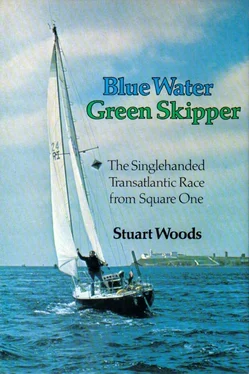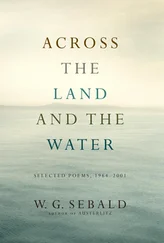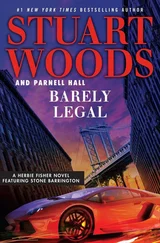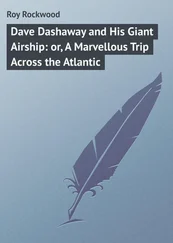In the meantime, the negotiations for the Monasterevin boat began to heat up, and I was made an offer which would be very difficult to refuse. I held off, though, waiting for the committee to meet and rule on the boat. While I was waiting, a letter came from Ron Holland. George Bush had told him that I was interested in a fast cruiser, he said, and he would be happy to talk with me about it.
I had forgotten about Ron Holland’s boat in my enthusiasm for the Hurley, and anyway, the Shamrock was out of my price range, but I telephoned him and told him what I was thinking of doing and asked him whether he thought a Shamrock would be a suitable yacht for the OSTAR. He thought it would. It was an easy boat to sail, and with its wide beam and high freeboard would be very seaworthy. I asked what modifications, if any, he would make to better suit the boat for its purpose. He’d add a skeg, maybe, to make the boat a bit more directionally stable off the wind and to help the self-steering, which would have to be fitted for the race. I told him I’d think about it.
I still had not made a definite decision to attempt the OSTAR project. I didn’t know exactly how much money was going to be available, and wouldn’t until I went home for the Christmas holidays, and I still hadn’t heard from the committee. Still, I knew I was going to buy some sort of cruising boat, and there were some steps I could take. I heard about a Leonard Breewood, who had started a school of navigation. I rang him up and learned that the full course for the Yachtmaster’s Offshore Certificate required three weekends of classroom instruction (forty-eight hours), plus considerable study in between. I signed up for the first weekend of the course.
I drove down to Len Breewood’s place in Tralee, a new house on the south shore of Tralee Bay, which he and his wife had built as a combination guesthouse/sailing and navigation school. It was in a beautiful setting, and Len turned out to be a man of many parts. He had started as a shipwright’s apprentice in the Royal Navy and had later taken degrees in both marine engineering and naval architecture.
He was lecturing in mechanical engineering at a college in Tralee, while building up his sailing-school business on the side. A small, wide-eyed man with a dapper beard, he was also an experienced yachtsman and, of course, navigator. My fellow pupil was a native Corkman who was home on leave from his job, which was, improbably, detective inspector in the Hong Kong police force. We spent all day Saturday and Sunday penetrating the mysteries of compass variation and deviation, chart symbols, tidal streams, the buoyage system, the rule of the road, flashing and occulting lights, passage planning, and two or three dozen other subjects, all brand-new to both of us. On Sunday afternoon we plotted a mythical weekend cruise off the south coast. I plotted my course straight through two islands, but apart from my supposed loss of the yacht and my probable fatality, all went well. Sunday night I phoned Ron Holland.
Monday morning I drove to Cork and went to Southcoast Boatyard. I arrived a bit early and occupied my time by taking a ladder around to different boats in cradles on the quay, climbing up to deck level and peering inside. Shortly, I was approached by a rumpled, unshaven figure, wearing jeans and a beat-up sheepskin jacket. Uh, oh, I thought, one of the lads has been sent to tell me not to mess with the boats.
“Hi,” he said, “I’m Ron Holland.”
6
Things begin to get out of hand
We sat in the sunny dining room of the Grand Hotel in Crosshaven, with a view of the river and, in the distance, the kelly-green hull of Golden Shamrock, the prototype, riding at her moorings. We had the place entirely to ourselves, business not being so hot in November, and our very own waiter hovered about. We had tried to get out to Shamrock to have a look at her but couldn’t get the club ferry started, so we had repaired to the hotel for some lunch.
Now I was explaining to Ron Holland what I was thinking of doing. I was careful to explain just how little experience I had. It seemed very important not to give him any sort of inflated impression of my state of knowledge. I had, by now, read maybe a dozen books on single-handing, cruising, yacht design, etc., and it is all too easy to bandy about a few technical terms and give someone the impression that you know more than you do. This is done every day in yacht club bars.
I poured out every thought I had about the race, the kind of boat I thought I needed, what I thought I had to do to get ready, what sort of equipment I would need. He was the first person I had told about this in any detail, and somewhat to my surprise, he seemed not to think I was mad and was actually agreeing with much of what I said. I suppose I had expected him to take a more skeptical view, perhaps even to try to discourage me, but this was not happening. Ron suggested we go to the boatyard and talk with the managing director.
Driving down to Crosshaven before lunch, Ron had pointed out a large Georgian house on the other side of the river and said that he lived in a flat on one side of the house. Now, driving back toward the yard and past the house again, I mentioned that I had often thought that this area would be a nice place to live, what with so much good sailing, but I thought that I could never find as good a situation as I had at Lough Cutra Castle.
“Let me show you a place we almost took when we came to Cork,” he said. “It didn’t have quite enough room for us, since we’re expecting a baby in the spring.”
We drove around to Coolmore, as the house was called, and stopped for a few minutes. Ron’s flat was four or five enormous rooms on the south side of the house, and his working space was on the large stair landing. We looked at the original drawings of Golden Shamrock and compared them to the production version. The new boat was to have a slightly higher and longer coach roof and a more comfortable interior, but the hull shape was to be identical to that of the prototype.
We met the owner of Coolmore, who looked very much the Master of the Hounds, which, it turned out, he was. He gave us the key to the place Ron wanted to show me, and we drove along a rutted, very muddy road beside the river until we came to a small clearing, where we parked the car. We walked a few yards and came to a lovely old stone cottage right on the banks of the river at a bend called Drake’s Pool, so named because Sir Francis Drake is supposed to have eluded the Spanish by hiding there. Because of the double bend in the river they thought it was petering out and went back to search for him in Cork Harbor. The Owenboy River has scoured out a deep pool there, and it is a perfect yacht anchorage. There was an empty mooring directly in front of the cottage. We looked inside: a large living room, a large bedroom, a small bedroom, a kitchen, and a bath. The place had been newly plumbed and wired for electricity. I felt a bit giddy; things had begun to move very fast. I looked again at the mooring as we left. It came with the cottage, Ron said.
At the boatyard we encountered the skepticism from its managing director, Barry Burke, that I had half expected from Ron. He wasn’t sure that the boat was suitable for a transatlantic passage. Ron said that he’d crossed the Tasman Sea in a similar-size boat. I pointed out that the OSTAR in ’72 had been done by David Blagden in a nineteen-foot Hunter and asked if he didn’t think his boat would be as strong as a Hunter 19. Ron said he’d give the boat more of a bashing in the 625-mile Fastnet Race than I’d give it in a transatlantic. We talked about making changes to the standard design. Burke was reluctant to slow his production line down with modifications to a standard boat. Pull it off the line, said Ron, and put a couple of men on it. Burke wasn’t sure. He asked when I would want the boat. Easter, I said. Impossible, he replied. He’d already sold nine boats. The earliest delivery date would be July 1. I did some quick mental calculations. The OSTAR rules required a five-hundred-mile qualifying single-handed cruise no later than three months before the race. I figured that if the boat were ready on July 1 I could just about get her and myself ready for a qualifying cruise before the end of the summer, if I sailed on as many other boats as I could in the spring and early summer. We made a list of the possible modifications to the boat, and Barry promised to let me have an estimate for them. I had hoped that he might agree to some discount, since the boat would undoubtedly receive a lot of attention if it were entered in the OSTAR, and I hoped to do a book about the experience; that would give it even more publicity. Barry didn’t seem inclined to give a discount. We left it at that, and I invited Ron to have dinner with me, where we continued our discussion of the yacht and the race. “What would you change about the boat if you were not building to the Rule?” I asked. (The International Offshore Rule, a rating system so complex that it is understood only by computers, which, in turn, explain it to yacht designers and yachting magazines, which publish incomprehensible articles about it.)
Читать дальше












